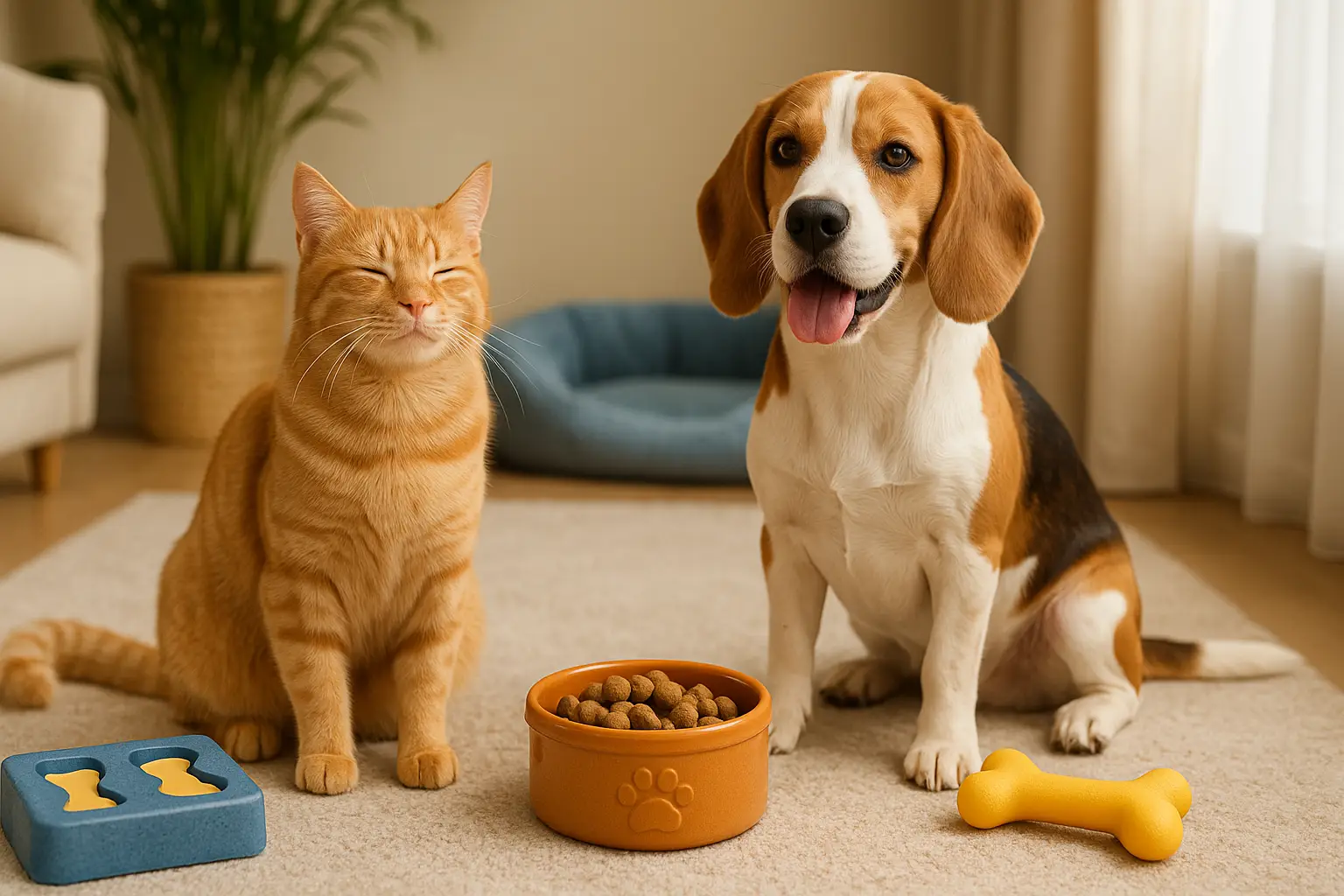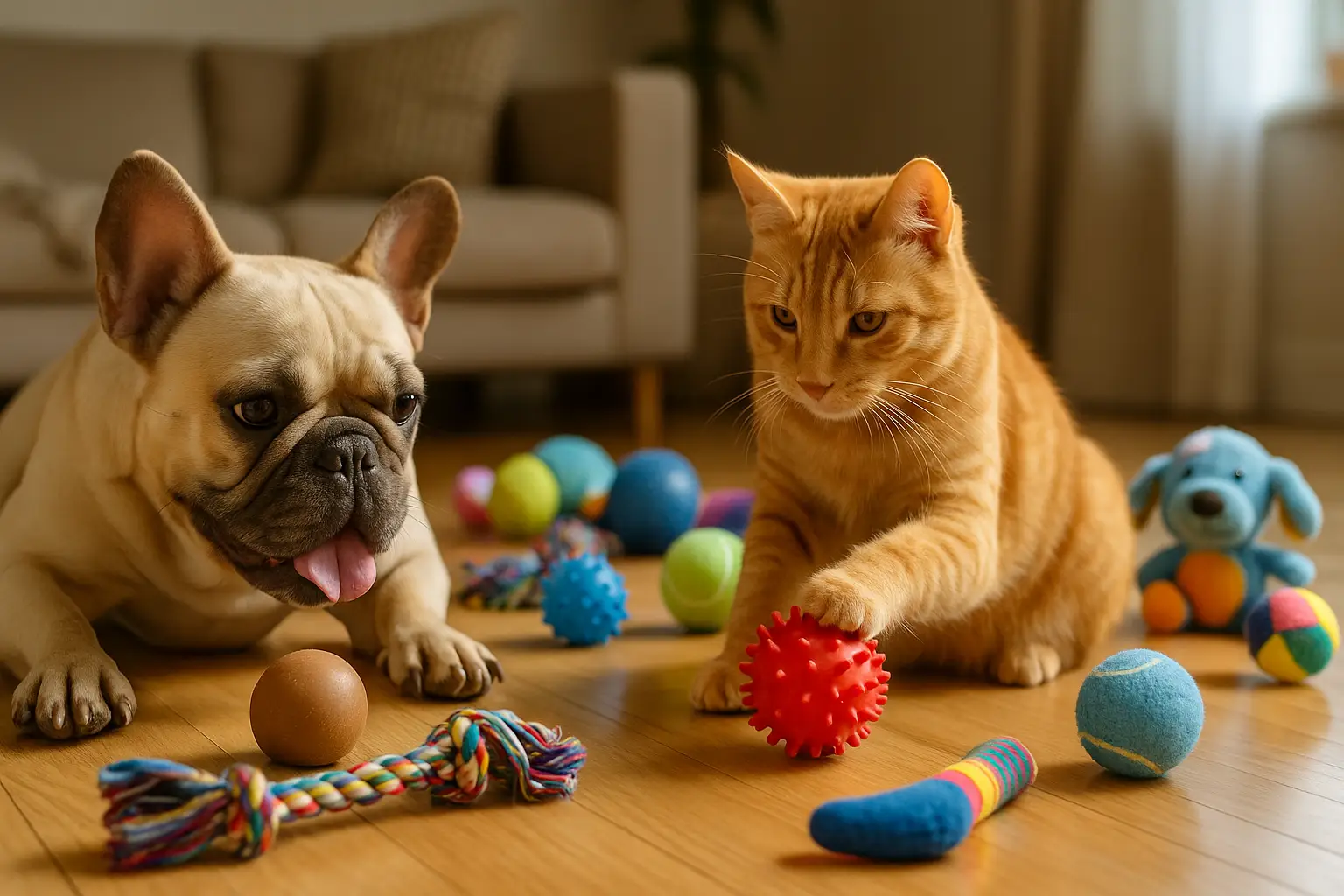Pet care that truly makes a difference

Table of Contents
What is pet care that truly makes a difference?
When we talk about pet care that truly makes a difference, we are not just referring to feeding your pet or walking it twice a day. True care goes beyond basic survival needs. It involves presence, attention, understanding, and choices made from love — every single day. Whether you’re raising a puppy, adopting a rescue cat, or caring for an older companion, the impact of your daily actions builds the quality of their entire life.
Think of your pet’s perspective. They don’t choose where to live, when to eat, or what their routine looks like. You decide everything. That’s why thoughtful care isn’t just important — it’s your responsibility. And the good news is: small, consistent actions often make the biggest difference.
“Pet care that truly makes a difference is not about doing everything perfectly. It’s about doing the right things with love, consistency, and awareness.”
Daily habits that truly change your pet’s life
Consistency is comfort
Animals thrive on routine. Knowing when it’s time to eat, walk, or rest gives them a sense of stability and safety. This applies to both physical and emotional well-being. When your dog knows it’s time for a walk or your cat expects affection after dinner, it becomes more than routine — it becomes bonding.
Try to keep meals, activities, and bedtime aligned every day. Even your tone of voice and the way you greet them can create an emotional structure they rely on.
Clean space, calm mind
Would you feel comfortable living in a space that smells, feels sticky, or is full of clutter? Neither would your pet. Clean water bowls, sanitized litter boxes, vacuumed floors (especially in homes with fur), and washed bedding go far beyond aesthetics. These actions directly affect your pet’s health and mood.
Set a simple routine: check the food and water bowls morning and night, clean bedding weekly, and ensure their main space is dry, safe, and ventilated. This reduces stress and prevents many illnesses caused by bacteria or pests.
Quality food — no shortcuts
Your pet’s health starts with what goes in the bowl. Avoid feeding low-quality kibble just because it’s cheap. Cheap food often contains harmful fillers, preservatives, and ingredients that cause more harm than good over time.
Do some research or ask your vet about options suitable for your pet’s age, weight, and breed. Invest in quality nutrition. The energy, mood, and even fur condition of your pet will reflect it.
“Feeding your pet is not about quantity — it’s about quality and balance. A better diet is one of the simplest ways to extend your pet’s life.”
Hydration matters — even for cats
Most pet owners overlook how crucial water is. Cats in particular are prone to urinary problems due to low water intake. Always keep fresh water available, and in warm weather or after exercise, offer extra hydration opportunities. You can even add wet food to increase water intake for pets that drink too little.
Empathy and emotional connection
They don’t speak — but they feel
Your pet may not talk, but it expresses needs and emotions constantly. Whining, purring, hiding, tail wagging, flattened ears — all are signs. Learning your pet’s body language helps you detect sadness, anxiety, boredom, or even illness before it worsens.
Pet care that truly makes a difference involves noticing the small things: a change in appetite, sleeping more than usual, or avoiding affection. These signs often point to emotional or physical needs that must be addressed.
Touch and attention heal
Simple gestures, like petting with intention, playing gently, or just sitting next to them while you scroll your phone, can mean the world. Physical touch reduces stress for both humans and animals. It releases oxytocin and builds trust over time.
Never underestimate how deeply your pet craves connection with you. They are not toys or background noise — they’re companions with emotional needs.
Be there, not just around
It’s easy to “be there” but not be present. Real presence means putting down your phone, speaking kindly, and giving full attention — even for just five minutes. It’s better than two hours of distracted coexistence.
Creating this presence regularly is the heart of pet care that truly makes a difference. When your pet feels seen and safe with you, it becomes more confident, affectionate, and relaxed.
Health Isn’t Optional: Preventive Care That Saves Lives
One of the most underrated aspects of pet care that truly makes a difference is preventive health. Too many guardians wait until there’s a visible problem before taking their pets to the vet. But just like with humans, prevention is the real secret to a long, healthy, and happy life.
When you invest in prevention, you avoid expensive treatments, reduce suffering, and gain peace of mind. And guess what? Most preventive actions are simple, low-cost, and quick to implement.
Regular vet visits — not only when they’re sick
Many pet owners only visit a vet in emergencies. But annual (or biannual) checkups are essential — even if your pet seems perfectly fine. Vets can detect early signs of illness, weight imbalance, joint issues, or behavioral shifts that might otherwise go unnoticed.
“Preventive vet visits are not a luxury — they are the foundation of responsible guardianship.”
Set a reminder to take your pet in at least once a year. Older pets or those with chronic conditions may need more frequent follow-ups.
Vaccines: protection that pays off
Vaccination schedules vary by region and species, but most pets need protection against common diseases like rabies, distemper, parvovirus, feline leukemia, and others. Skipping vaccines exposes your pet — and sometimes humans — to preventable illnesses.
Keep a digital or physical record of all vaccines and boosters. If you’re unsure about which ones your pet needs, book a wellness consultation and clarify everything with your vet.
Parasite control: inside and out
Fleas, ticks, and intestinal worms aren’t just annoying — they’re dangerous. They can lead to anemia, dermatitis, digestive issues, and even transmit deadly diseases. Monthly or quarterly parasite prevention is a non-negotiable step in pet care that truly makes a difference.
There are many options — oral tablets, topical drops, collars — depending on the species and lifestyle of your pet. Indoor pets also need protection, as parasites can come in through shoes, windows, or other animals.
Spaying and neutering: beyond reproduction
Many people delay or skip this decision due to myths or lack of information. But spaying and neutering offers huge health benefits. It helps prevent cancers (like mammary tumors or prostate disease), reduces aggression and roaming behavior, and avoids accidental litters.
Discuss the ideal timing with your vet, since it can vary based on size and breed. The earlier it’s done (when appropriate), the safer and smoother the recovery.
Dental care: the silent factor
Bad breath in pets is not normal. It often signals gingivitis, plaque buildup, or deeper infections. Left untreated, these issues can affect the heart, liver, and kidneys.
Brush your pet’s teeth regularly with pet-safe toothpaste, offer dental chews, and schedule professional cleanings when needed. It’s an easy habit that prevents big problems later.
“Dental hygiene is the hidden key to longevity in pets — and it starts at home.”
Monitor their weight and energy
Sudden changes in appetite, weight gain/loss, or activity level are often early signs of disease or stress. Make it a habit to observe your pet’s body condition weekly. You don’t need a scale — you can feel the ribs, watch posture, and monitor how easily they move.
Use this data to adjust their diet, increase activity, or consult a vet before things escalate. Your awareness is their safety net.
Behavior is health, too
If your pet becomes aggressive, withdrawn, starts hiding, overgrooming, or showing obsessive behaviors — don’t ignore it. These can be signs of pain, trauma, neurological issues, or emotional stress.
True pet care that truly makes a difference includes emotional health as a vital part of overall wellness. Talk to your vet, and if needed, seek a behavioral specialist.
Keep them moving
Activity helps with digestion, weight, mental stimulation, and joint health. Walks, playtime, puzzle toys, agility training — they all count. Make movement part of your routine, no matter the pet’s age.
Older pets especially benefit from light exercise to prevent stiffness and promote circulation. Just adapt the intensity according to their abilities.
Your Pet’s Emotional World: Building a Safe and Enriching Environment
One of the most overlooked areas in pet care that truly makes a difference is emotional health. Just like humans, pets experience boredom, anxiety, loneliness, excitement, and affection. And unlike humans, they often have no way to process these emotions except through behavior.
A misbehaving pet is usually a misunderstood one. If your dog is destroying the couch or your cat is meowing all night, there’s a message there. And that message often says: “I need stimulation, routine, comfort, or connection.”
The role of environment in behavior
Where your pet lives affects how it feels. A home that’s too noisy, chaotic, or unstimulating can create chronic stress. A space that’s calm, safe, and enriching, on the other hand, helps the pet regulate its mood and behaviors.
This doesn’t mean building a pet palace. It means intentional design. A soft bed in a quiet corner. Access to natural light. Toys that make them think. Hiding spots for cats. Open space for dogs to stretch and move.
“Your pet’s environment shapes their behavior more than you think — make it count.”
Enrichment isn’t a luxury — it’s a need
Imagine being in the same room every day with nothing to do. That’s what many pets experience when enrichment is ignored. Enrichment refers to activities, items, and experiences that stimulate your pet mentally, physically, and emotionally.
Simple examples include:
- Puzzle toys that reward food for effort
- Interactive play sessions (not just letting them run loose)
- Training new tricks for dogs or clicker sessions for cats
- Safe exploration walks, sniffing sessions, or letting them watch birds from the window
Rotate toys every week to keep things interesting. Introduce new sounds, textures, and games. Even five minutes of mental challenge per day makes a huge difference.
Sound, light, and comfort balance
Pets are sensitive to their environment in ways we often forget. Loud TVs, yelling, harsh lighting, or chaotic movement can make them anxious. Try to create a balance of calm and liveliness in your home.
Use softer tones. Play calming music. Keep lights dimmer at night. Create a routine that includes quiet time — it teaches your pet to relax and feel safe.
Privacy and autonomy
Especially for cats and smaller animals, having a “do not disturb” zone is crucial. Constant stimulation, handling, or intrusion can make pets stressed. Let them retreat when they want, and never force interaction.
Pet care that truly makes a difference respects the animal’s boundaries. This builds trust — and trusted pets are calmer, more affectionate, and easier to care for.
Multiple-pet dynamics
If you have more than one pet, be mindful of the energy between them. Some may be dominant, others timid. Always give each pet its own space for eating, sleeping, and playing. Monitor for signs of bullying or exclusion, and intervene gently when necessary.
Positive social interaction enriches emotional health, but forced coexistence causes anxiety. Be the peacekeeper and watch closely for what each individual needs.
Include them in your life
Pets don’t just want care — they want connection. Let them accompany you while you work, include them in walks or drives, and speak to them often. Yes, even if they don’t understand every word — your tone and attention make all the difference.
“Pets might not speak our language, but they understand the tone of love and the rhythm of presence.”
Ultimately, your pet’s emotional world is fragile. Nurturing it is one of the most powerful acts of kindness you can offer.
Long-Term Pet Care: Building a Life of Wellness and Trust
Great pet care isn’t a one-time effort. It’s a journey — one that evolves as your pet ages, changes behavior, or faces health shifts. If you want to offer pet care that truly makes a difference, you must think long-term, from the moment they enter your life to their golden years.
Some decisions made early — like proper nutrition, socialization, and training — will shape your pet’s behavior and health for life. Others, like adapting to their senior needs or managing chronic conditions, will emerge later. The key is staying present and responsive at every stage.
Set a foundation in the first months
Whether you adopt a baby animal or an adult rescue, the first few weeks set the tone. During this time, create a sense of safety and routine. Introduce boundaries with kindness. Avoid punishment-based methods and use positive reinforcement instead.
Training doesn’t just mean sit and stay. It includes potty routines, meal discipline, how they respond to visitors, and more. A well-adjusted pet is easier to live with, less anxious, and safer to handle over time.
“The first 90 days define your pet’s behavior for the next 9 years. Use them wisely.”
Reinforce trust through consistency
Animals remember how they’re treated. Sudden changes, broken routines, or erratic behavior from humans create insecurity. Your pet thrives on knowing what to expect — and who they can trust.
Daily rituals like greeting them in the morning, feeding at regular times, or using the same phrases build emotional security. That kind of trust makes vet visits, travel, or new experiences far less traumatic.
Prepare for aging — it will come fast
One day your energetic puppy or playful kitten will slow down. They may develop arthritis, lose hearing, or become picky with food. Planning for these changes is part of pet care that truly makes a difference.
Here’s what long-term care often includes as pets age:
- Orthopedic bedding for joint support
- Elevated food bowls to ease neck strain
- More frequent but shorter walks to avoid overexertion
- Regular blood work to catch internal issues early
- Patience with changes in behavior or toilet habits
Your pet’s needs will shift slowly — be attentive, adapt their care, and continue showing them love, even if they no longer jump with excitement.
Emergency readiness: don’t wait for the worst
Few pet owners are prepared for emergencies. Having a plan — and a basic kit — makes a huge difference in critical situations.
Here’s a quick checklist:
- Vet emergency contacts (24h)
- Pet first aid kit (gauze, saline, tweezers, gloves)
- Copies of vaccination and health history
- Backup food, medication, and leash
Keep these in a single container and tell at least one other family member where it is. Emergencies aren’t planned, but preparation is.
Keep these in a single container and tell at least one other family member where it is. Emergencies aren’t planned, but preparation is.
🎥 Quick Video: Simple Tricks to Keep Your Pet Happy and Healthy
Watch this short video with practical tips that match everything we’ve discussed above:
Document their life and needs
As your pet’s guardian, you know their quirks, diet, allergies, fears, and favorite spots. Write it all down. In the event of travel, hospitalization, or relocation, this information becomes essential.
Also, keep records of vet visits, medications, and notable behavior changes. A basic pet health journal (even digital) can help track patterns and alert you to subtle declines in health.
Plan for the future — including hard decisions
No one likes to talk about it, but end-of-life care is part of the journey. Providing dignity, comfort, and a peaceful transition is a final act of love. Talk to your vet when the time comes. Consider palliative care options and avoid unnecessary suffering.
Many owners feel guilt or uncertainty. But if you’ve given a life filled with love, comfort, and safety, you’ve already done more than most. Let your decisions reflect that same care, even in goodbye.
“True care doesn’t end when life does. It lives on in every memory you shared.”
Long-term care isn’t about being perfect. It’s about showing up — again and again — with love, awareness, and readiness to adapt. That’s what makes it pet care that truly makes a difference.
Final Tips for Pet Care That Truly Makes a Difference
After everything we’ve covered, it becomes clear: taking care of a pet isn’t about doing big things once in a while — it’s about doing the right small things, every day. And doing them with love, presence, and responsibility.
To help you apply everything we’ve discussed, here’s a practical summary to guide your daily routine.
📋 Quick Checklist for Conscious Pet Care
- ✅ Feed high-quality, species-appropriate food — skip the cheap stuff
- ✅ Provide fresh water daily and ensure proper hydration
- ✅ Stick to a routine — pets crave structure and security
- ✅ Visit the vet at least once a year — prevention saves lives
- ✅ Enrich their environment with toys, space, and calm
- ✅ Respect their emotions — pets feel deeply, even in silence
- ✅ Keep hygiene in check: clean bedding, bowls, ears, and teeth
- ✅ Prepare for emergencies and aging with proactive care
- ✅ Be present — your love is their most valuable medicine
“Your pet doesn’t care if you’re rich, successful, or perfect. They care if you’re there, if you’re kind, and if you love them back.”
🔗 Keep learning and caring:
- How to Support Your Pet’s Personality
- Ideal Daily Routine for Dogs and Cats
- Understanding Pet Body Language
- General Pet Care – ASPCA
Remember, your pet has one life — and you’re their whole world. What you do today echoes in their well-being for years to come. Keep showing up, learning, adjusting, and loving. That’s what truly makes a difference. 🐾




Post Comment